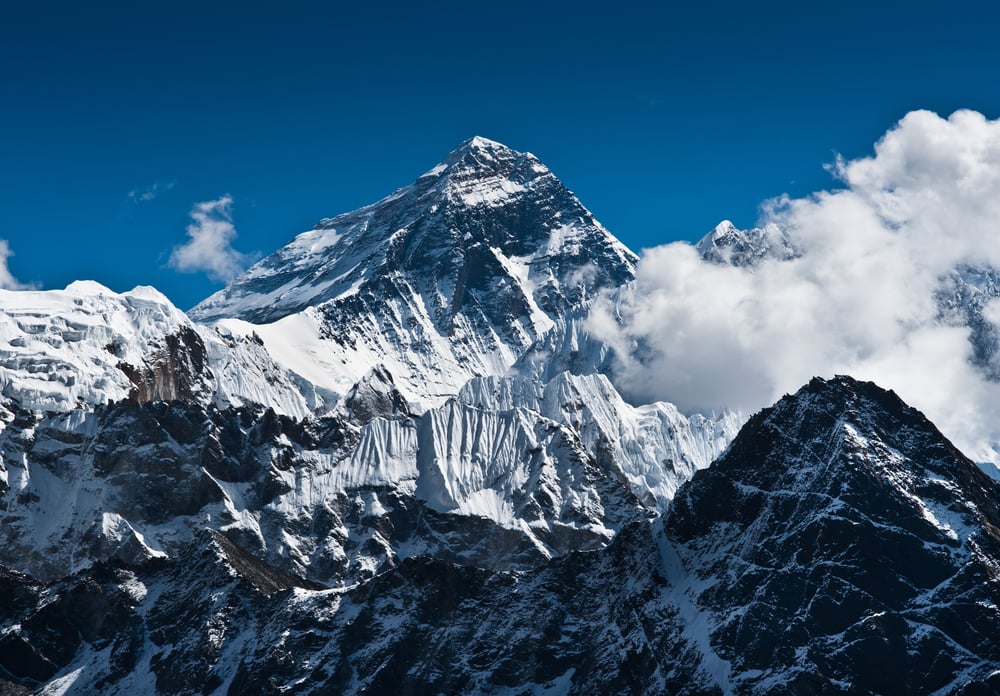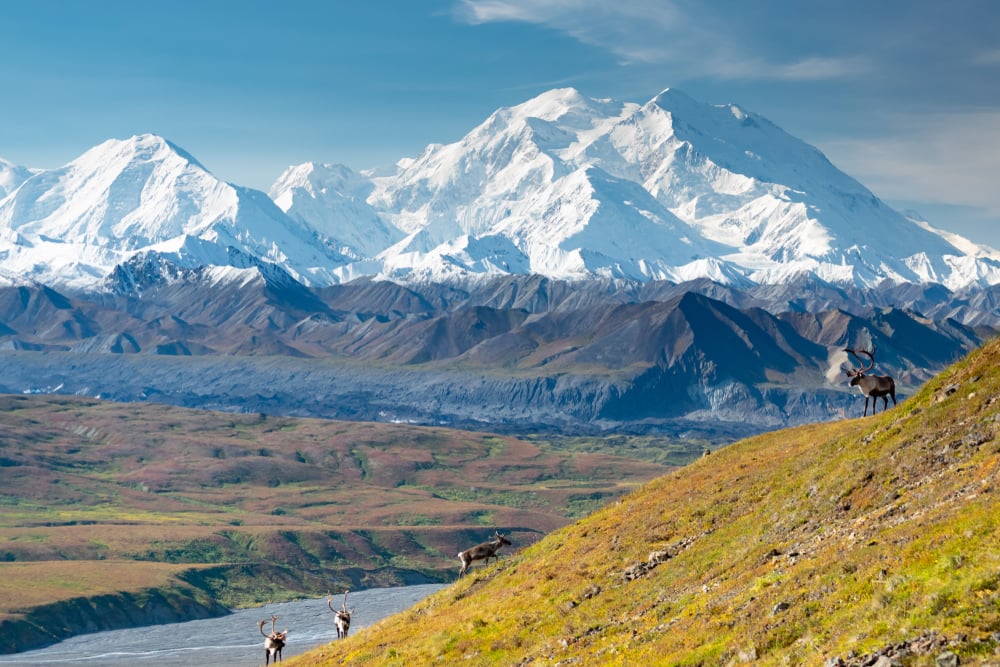Mount Everest, Denali, and Mount Kilimanjaro are the world's most extraordinary mountain wonders, symbolizing natural beauty, human ambition, and cultural significance. They offer unique challenges and ecological diversity, inspiring adventurers and connecting us profoundly to the natural world.
—
Originally posted on: https://sevennaturalwonders.org/the-worlds-mountain-wonders/
Mountains have always held a special place in human culture and imagination, symbolizing the peaks of human ambition and the beauty of nature’s grand designs. Among the countless mountains that grace our planet, three stand out as unparalleled wonders: Mount Everest, Denali, and Mount Kilimanjaro. These mountains are not only the highest or most iconic in their respective regions, but they also represent a diverse array of ecological zones, cultural significance, and mountaineering challenges. Let’s explore what makes Mount Everest, Denali, and Mount Kilimanjaro the world’s most extraordinary mountain wonders.
Mount Everest: The Roof of the World

Mount Everest, known as Sagarmatha in Nepal and Chomolungma in Tibet, is the highest mountain on Earth, standing at a staggering 8,848 meters (29,029 feet) above sea level. This colossal peak is part of the Himalayas, the youngest and highest mountain range in the world. Formed by the collision of the Indian and Eurasian tectonic plates, Everest’s towering presence has fascinated adventurers, scientists, and nature lovers for centuries.
Everest’s history as a mountaineering destination began in earnest in the early 20th century. The first successful ascent was achieved by Sir Edmund Hillary of New Zealand and Tenzing Norgay, a Sherpa of Nepal, on May 29, 1953. Since then, Everest has become a symbol of human endurance and ambition, attracting climbers from all over the world. However, scaling Everest is not for the faint-hearted. The mountain’s extreme altitude, unpredictable weather, and treacherous climbing conditions pose significant risks. Despite these challenges, thousands of climbers attempt to reach the summit each year, driven by the allure of standing on the world’s highest point.
Beyond its physical and mountaineering significance, Everest holds deep cultural importance. Accordingly, it is protected in Sagarmatha National Park. For the Sherpa people and other local communities, the mountain is sacred, representing the mother of the universe. The spiritual connection to Everest is reflected in the many rituals and practices observed by climbers and locals alike.
Denali: The Great One

Denali, formerly known as Mount McKinley, is the highest peak in North America, rising to an impressive 6,190 meters (20,310 feet) above sea level. Located in the Alaska Range, Denali is renowned for its majestic beauty and the severe challenges it presents to mountaineers. The mountain’s name, Denali, means “The Great One” in the native Koyukon language, and it is indeed a fitting title for such a formidable natural wonder.
Denali’s prominence is not just in its height but also in its dramatic rise from the surrounding landscape. The base-to-peak rise of Denali is among the highest of any mountain, as it ascends directly from the lowlands of central Alaska. This vertical gain creates a striking and awe-inspiring sight, making Denali one of the most visually impressive mountains in the world.
Climbing Denali is a true test of skill, endurance, and resilience. The mountain’s extreme weather, including severe cold and high winds, combined with its remote location, make expeditions particularly challenging. The first successful ascent of Denali was made in 1913 by Hudson Stuck, Harry Karstens, Walter Harper, and Robert Tatum. Since then, it has been a coveted summit for climbers seeking to test their limits against one of the world’s great peaks.
Denali National Park and Preserve, which encompasses the mountain, offers visitors a chance to experience the pristine wilderness of Alaska. The park is home to diverse wildlife, including grizzly bears, caribou, and wolves, and provides opportunities for hiking, wildlife viewing, and experiencing the raw beauty of the Alaskan landscape.
Mount Kilimanjaro: The Roof of Africa
Mount Kilimanjaro, the highest mountain in Africa, stands at 5,895 meters (19,341 feet) above sea level. Located in Tanzania, Kilimanjaro is a dormant volcano with three distinct cones: Kibo, Mawenzi, and Shira. The mountain is a beacon of Africa’s natural beauty and a popular destination for trekkers and adventurers from around the globe.
Kilimanjaro’s unique structure and ecosystem set it apart from other high peaks. The ascent takes climbers through five distinct climatic zones, from tropical rainforest at the base, through moorland and alpine desert, to the arctic conditions at the summit. This journey through diverse environments offers a fascinating glimpse into the planet’s varied ecosystems and the resilience of life in extreme conditions.
Unlike Everest and Denali, Kilimanjaro does not require technical climbing skills, making it accessible to a broader range of trekkers. The main challenge is the altitude, which can cause altitude sickness if climbers ascend too quickly. The most popular route to the summit is the Marangu Route, also known as the “Coca-Cola Route,” which provides huts for accommodation and a relatively straightforward path to the top. Other routes, such as the Machame and Lemosho, offer more challenging treks through stunning landscapes.
Kilimanjaro’s cultural significance is profound, with the mountain playing a central role in local myths and traditions. For many, it symbolizes freedom and the enduring spirit of Africa. The first recorded ascent of Kilimanjaro was made by German geographer Hans Meyer and Austrian mountaineer Ludwig Purtscheller in 1889.
Summary: What Makes These the Three Best Mountain Wonders in the World?
Mount Everest, Denali, and Mount Kilimanjaro are not just the highest peaks on their respective continents; they represent the pinnacle of natural beauty, human endeavor, and cultural significance. Everest’s unparalleled height and storied history of mountaineering achievement make it a symbol of human aspiration and resilience. Denali’s breathtaking rise and harsh, untamed environment test the mettle of even the most experienced climbers, embodying the spirit of adventure and exploration. Kilimanjaro’s unique ecological journey and accessibility offer an enriching experience that bridges the natural world’s beauty and the human spirit’s endurance.
These three mountains capture the essence of what makes mountains so compelling: their ability to inspire, challenge, and connect us to the natural world in profound ways. Whether through the lens of adventure, culture, or ecology, Everest, Denali, and Kilimanjaro stand as the world’s most extraordinary mountain wonders
Contact Info:
Name: iCopify
Email: Send Email
Organization: icopify
Website: https://icopify.com
Release ID: 89136530
In case of identifying any errors, concerns, or inconsistencies within the content shared in this press release that necessitate action or if you require assistance with a press release takedown, we strongly urge you to notify us promptly by contacting error@releasecontact.com (it is important to note that this email is the authorized channel for such matters, sending multiple emails to multiple addresses does not necessarily help expedite your request). Our expert team is committed to addressing your concerns within 8 hours by taking necessary actions diligently to rectify any identified issues or supporting you with the removal process. Delivering accurate and reliable information remains our top priority.